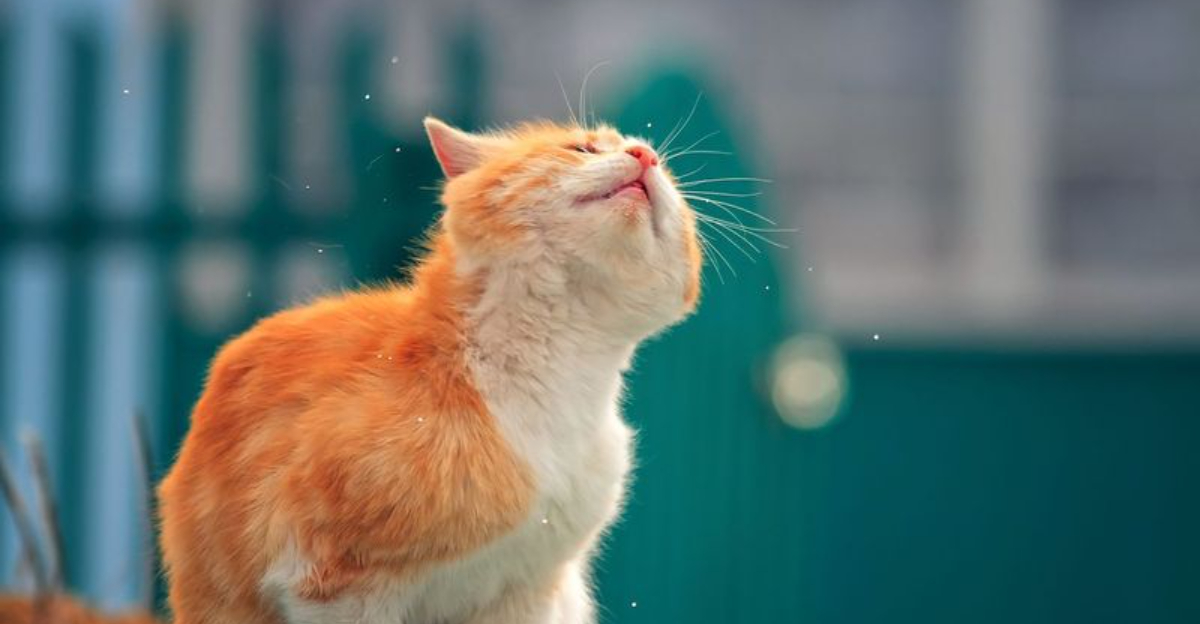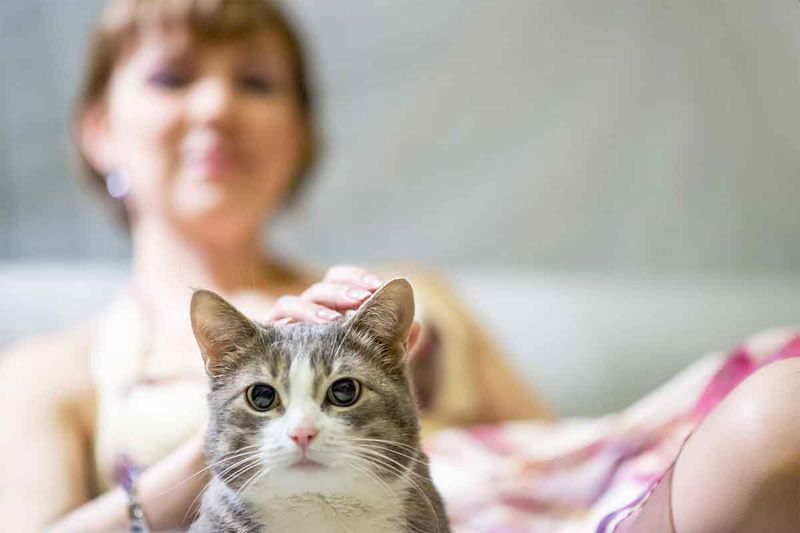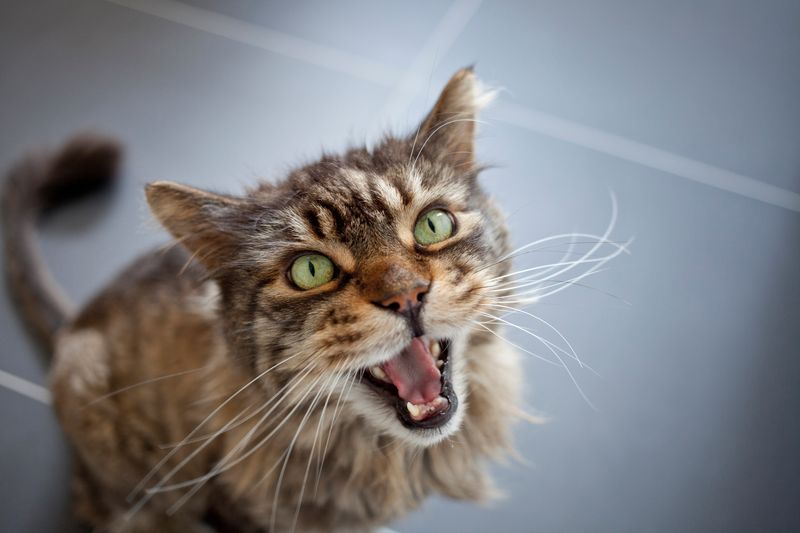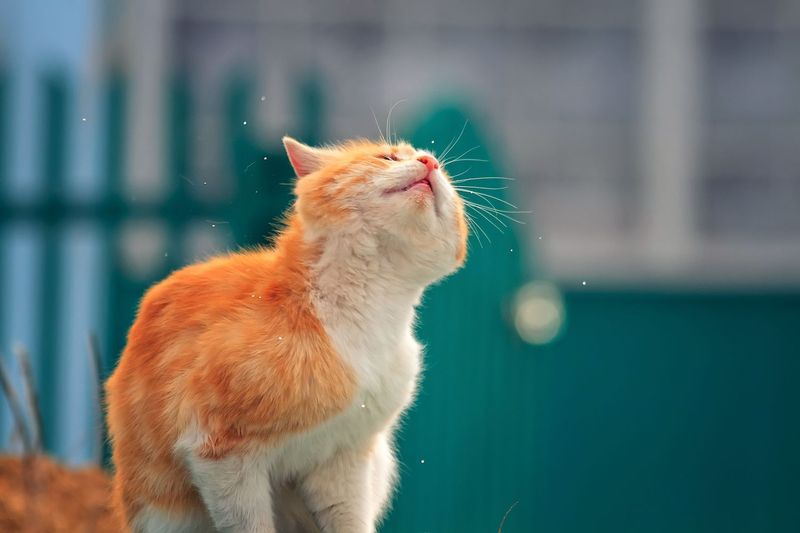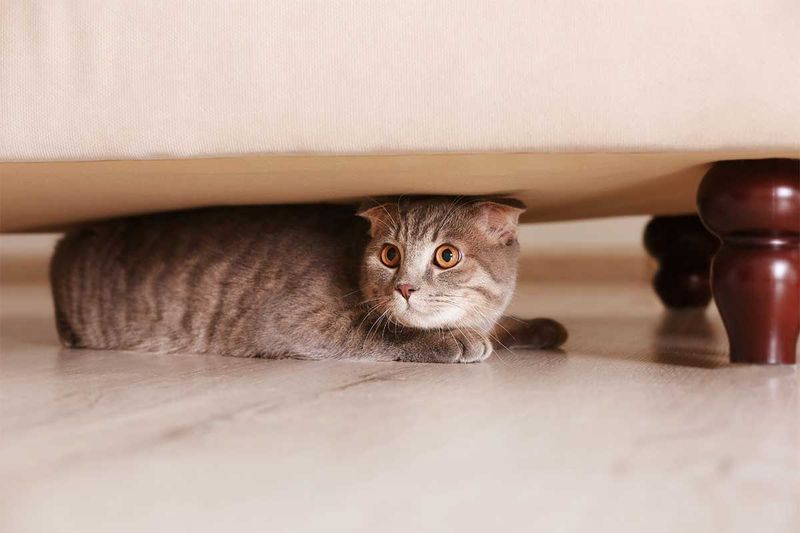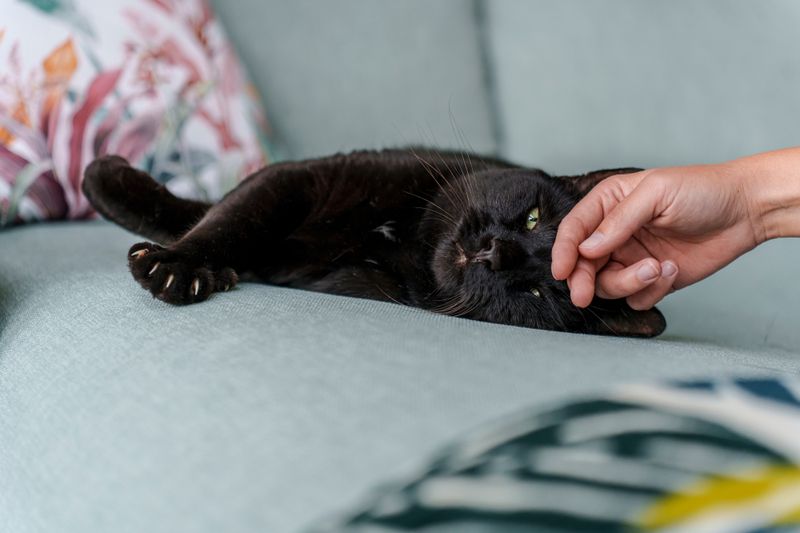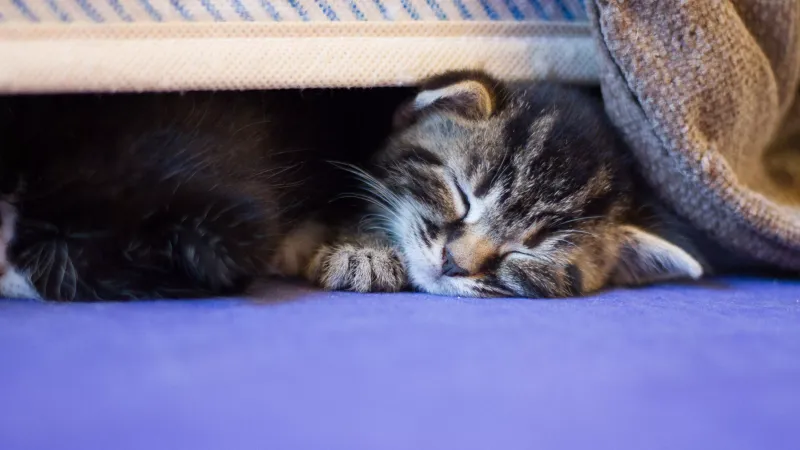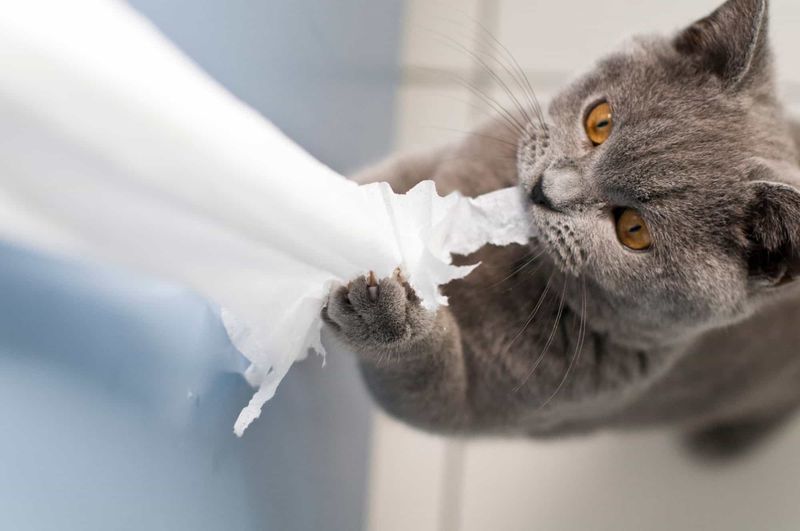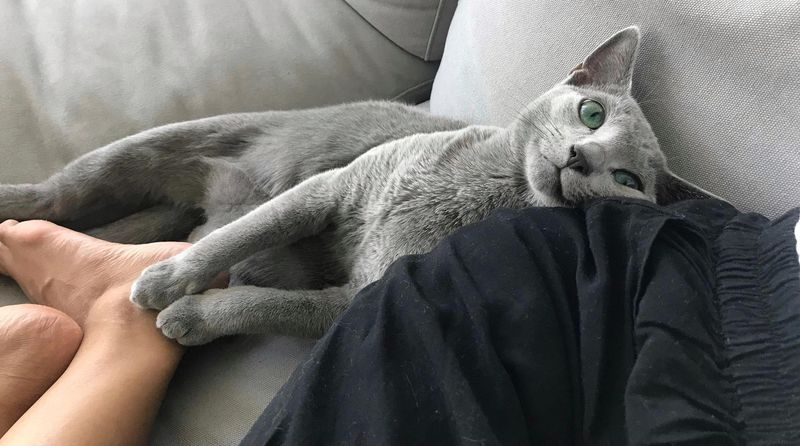📖 Table of Content:
- 1. Excessive Hiding
- 2. Sudden Aggression
- 3. Fear of Certain People or Objects
- 4. Loss of Appetite
- 5. Overgrooming or Self-Mutilation
- 6. Litter Box Issues
- 7. Excessive Meowing or Silence
- 8. Trembling or Shaking
- 9. Sudden Bolting or Startling Easily
- 10. Avoiding Touch or Flinching
- 11. Sleeping More Than Usual
- 12. Lack of Interest in Play
- 13. Hypervigilance and Wide Eyes
- 14. Destructive Behavior
- 15. Excessive Clinginess or Avoidance
Unlike people, however, cats cannot verbally express their emotions, making it crucial for owners to recognize the signs of emotional distress. A traumatized cat may display subtle behavioral changes or more severe reactions that indicate fear, anxiety, or depression. Understanding these warning signs is the first step in providing the right support and care to help them heal.
Recognizing trauma in cats requires patience and keen observation, as each feline reacts differently based on their past experiences. Some may become withdrawn and hide for long periods, while others may exhibit aggression or destructive behaviors as a way to cope with stress. Physical symptoms, such as excessive grooming or appetite loss, can also indicate underlying emotional distress. The key to helping a traumatized cat is creating a stable, reassuring environment that promotes a sense of safety and trust. By responding with empathy and consistency, owners can gently guide their feline companions toward emotional recovery.
Healing from trauma takes time, but with the right approach, even the most fearful or withdrawn cat can regain confidence and joy. Providing a safe space, engaging in positive interactions, and establishing a predictable routine are essential steps in the healing process. Some cats may require additional support, such as calming aids or veterinary intervention, to fully overcome their distress. Every small act of kindness, whether through gentle words or patient understanding, can make a significant difference in their recovery. By learning to recognize and address trauma in cats, owners can build stronger bonds with their pets and help them lead happier, healthier lives.
1. Excessive Hiding
Retreating into small, dark spaces more often than usual is a strong indicator of feline trauma. Cats instinctively seek out hidden areas when they feel unsafe or overwhelmed. If a previously social cat suddenly isolates itself under beds, inside closets, or behind furniture, it may be experiencing emotional distress. Providing a designated safe space, such as a cozy bed or enclosed area, can help reassure a fearful cat. Avoid forcing them out of hiding, as this can worsen their anxiety and damage trust. Instead, try using gentle verbal reassurance and leaving treats nearby to encourage them to come out at their own pace. Over time, consistent affection and a stable routine can help the cat regain confidence and feel more secure in its environment.
2. Sudden Aggression
A previously gentle cat that starts hissing, biting, or scratching unexpectedly may be reacting to trauma. Stress and fear can make cats feel cornered, causing them to lash out defensively. Even simple touches or approaches may trigger an aggressive response due to past negative experiences. The best way to address this behavior is through patience and non-threatening interactions. Offering treats, speaking softly, and avoiding direct eye contact can help ease their fears. Never punish an aggressive cat, as this can reinforce their fear and make the behavior worse. Instead, give them space and allow them to build trust at their own pace.
3. Fear of Certain People or Objects
Some cats develop a strong aversion to specific individuals, objects, or sounds that remind them of past trauma. A cat that was mistreated by a man, for example, may show fear toward all men. They may also cower or run away when hearing loud noises or seeing objects associated with past abuse. Helping a cat overcome these fears requires slow and positive exposure. The feared person should avoid sudden movements and use treats to build positive associations. If an object triggers fear, keeping it in a neutral area and allowing the cat to approach it voluntarily can reduce anxiety. Over time, repeated positive experiences can help the cat dissociate past trauma from these triggers.
4. Loss of Appetite
A traumatized cat may refuse to eat, which can lead to health issues if left unaddressed. Stress affects digestion and appetite, making it difficult for a cat to enjoy food even when hungry. If the cat refuses to eat for more than 24 hours, consulting a vet is crucial to rule out medical conditions. Offering strong-smelling foods, such as tuna or wet food, may encourage eating. Creating a quiet, stress-free feeding environment can also help them feel safe enough to eat. Hand-feeding small amounts of food can help build trust while ensuring they get necessary nutrients. Providing regular meal times and maintaining a consistent feeding routine can aid in restoring a healthy appetite.
5. Overgrooming or Self-Mutilation
When a cat obsessively licks or chews its fur, it could be a sign of emotional distress. Trauma-related anxiety may cause excessive grooming, leading to bald patches or irritated skin. This behavior often serves as a coping mechanism, providing temporary relief from stress. To help, identifying and eliminating sources of stress in the environment is essential. Using feline pheromone diffusers or calming supplements can reduce anxiety levels. Engaging the cat in interactive play or providing scratching posts can redirect their focus. If the behavior persists, a veterinarian can rule out medical causes and recommend further behavioral interventions.
6. Litter Box Issues
Urinating or defecating outside the litter box can signal emotional distress in cats. This behavior is often a response to trauma or environmental changes. To address this issue, ensure the litter box is clean and located in a quiet, accessible area. Offering multiple boxes in a multi-cat household may also help. If the problem persists, consult a veterinarian to rule out medical causes. Behavioral therapies and gradually reintroducing the litter box in a stress-free manner can restore proper habits. Consistency and patience are key to helping your feline friend feel secure.
7. Excessive Meowing or Silence
A sudden change in vocalization—whether excessive meowing or complete silence—can indicate emotional distress. Some traumatized cats become more vocal, seeking reassurance through constant cries. Others may withdraw entirely, refusing to make sounds even when hungry or seeking attention. Understanding your cat’s usual behavior can help identify these shifts early. Responding to excessive meowing with calm reassurance while avoiding reinforcement of attention-seeking behavior is key. For silent cats, engaging them in interactive play and providing gentle encouragement can help restore communication. A predictable routine helps them feel safe and may gradually normalize their vocal behavior.
8. Trembling or Shaking
Cats that tremble or shake uncontrollably, especially in response to specific triggers, may be reliving past trauma. This physical reaction is often caused by heightened stress and fear responses. Providing a calm and quiet environment is essential to help them feel safe. Sitting near them without forcing interaction can establish a sense of security. A soft voice, slow movements, and gentle petting (if tolerated) can help reassure them. Some cats benefit from calming pheromone sprays or supplements designed for anxiety relief. Patience and consistency are key in reducing these episodes over time.
9. Sudden Bolting or Startling Easily
A cat that frequently bolts from the room or jumps at the slightest noise may be hypervigilant due to past trauma. Their nervous system remains in a heightened state, making them react as if constantly under threat. Slow desensitization to everyday household sounds can help ease their startle reflex. Keeping their environment predictable with minimal sudden changes can provide comfort. Speaking softly before approaching helps prevent startling them unintentionally. Engaging them in interactive play can redirect their energy into positive experiences. Gradual exposure to normal stimuli at their own pace helps reduce fear responses.
10. Avoiding Touch or Flinching
A traumatized cat may react defensively to physical contact, flinching or pulling away when touched. Past abuse or negative experiences can make them wary of human interaction. Allowing the cat to set the pace for interactions is crucial in rebuilding trust. Sitting near them without reaching out gives them control over engagement. Using treats and slow movements encourages positive associations with touch. Over time, gentle petting in non-threatening areas (such as under the chin) can help them become comfortable. Respecting their boundaries ensures they don’t feel pressured, leading to more trust.
11. Sleeping More Than Usual
Depression in cats often manifests as excessive sleep, even beyond their usual rest patterns. A previously active cat that becomes lethargic and uninterested in play may be emotionally struggling. Creating a stimulating environment with interactive toys can help re-engage them. Encouraging movement through gentle play sessions fosters positive energy. Sunlit resting spots and warm blankets can provide comfort and security. Offering affection through soft verbal encouragement can slowly lift their spirits. If lethargy persists, consulting a veterinarian can rule out underlying health issues.
12. Lack of Interest in Play
A cat that no longer enjoys play may be experiencing emotional distress or depression. Trauma can suppress their natural curiosity and drive to engage with toys. Introducing different types of toys can help identify what piques their interest again. Using food-dispensing toys or feather wands can encourage interaction. Providing positive reinforcement when they engage in play helps rebuild confidence. Short, gentle play sessions help ease them back into normal activity. Gradually, their enthusiasm for playtime can return with patience and encouragement.
13. Hypervigilance and Wide Eyes
Constant scanning of the surroundings with dilated pupils often signals a heightened state of alertness. A traumatized cat may appear restless and unable to relax due to fear of perceived threats. Minimizing loud noises and sudden movements helps reduce stress. Providing a safe retreat area, such as a covered bed, can offer them comfort. Offering slow blinks and relaxed body language encourages a sense of calm. Over time, exposure to a stress-free routine can reduce their hyperawareness. Trust-building through predictable interactions helps ease their constant vigilance.
14. Destructive Behavior
Some cats cope with trauma through excessive scratching, chewing, or knocking over objects. This behavior often stems from pent-up stress or frustration. Providing scratching posts and engaging them in play can redirect their energy. Interactive puzzle toys can stimulate their mind and reduce destructive urges. Ensuring they have enough environmental enrichment prevents boredom. Offering praise for using appropriate outlets, like scratching posts, reinforces good behavior. Reducing stressors in their environment further decreases destructive tendencies.
15. Excessive Clinginess or Avoidance
Some traumatized cats become overly dependent on their owners, while others withdraw entirely. Finding a balance between giving them space and offering comfort is key. Creating a routine where they feel secure helps regulate their behavior. Gentle interactions, such as sitting nearby without forcing contact, allow trust to develop. Providing toys and self-soothing items, like soft blankets, can ease separation anxiety. Encouraging independence through play and interactive activities builds confidence. Over time, their attachment levels should normalize with consistent support.
